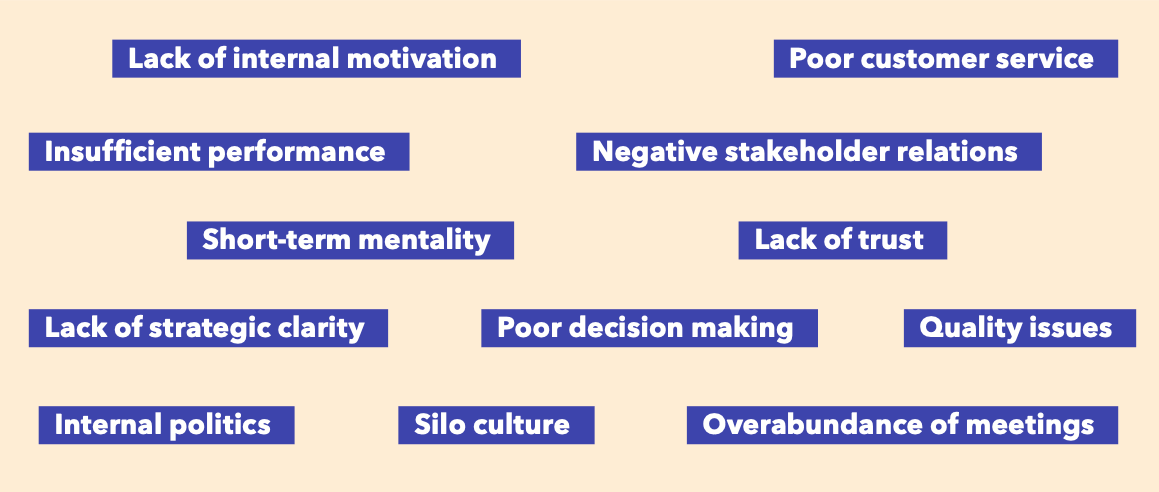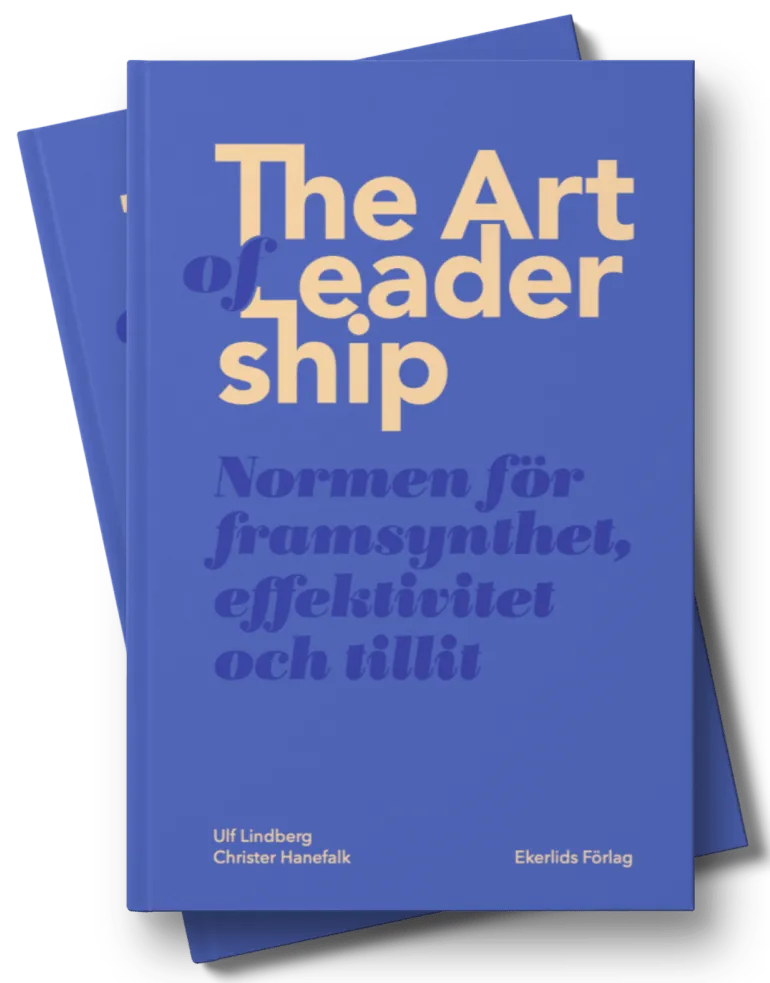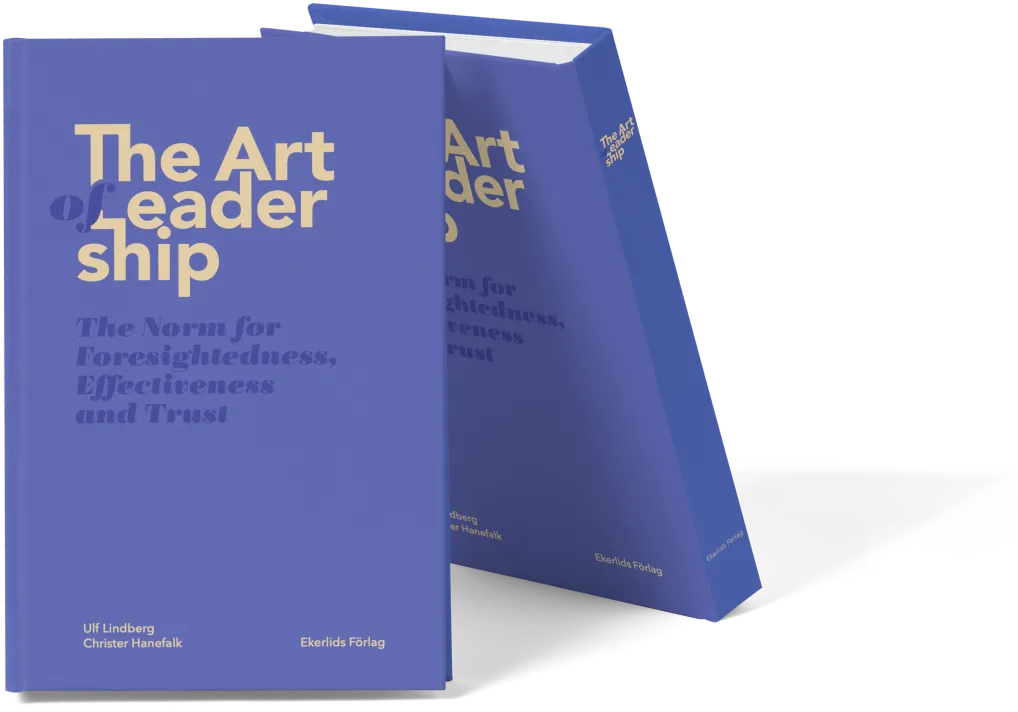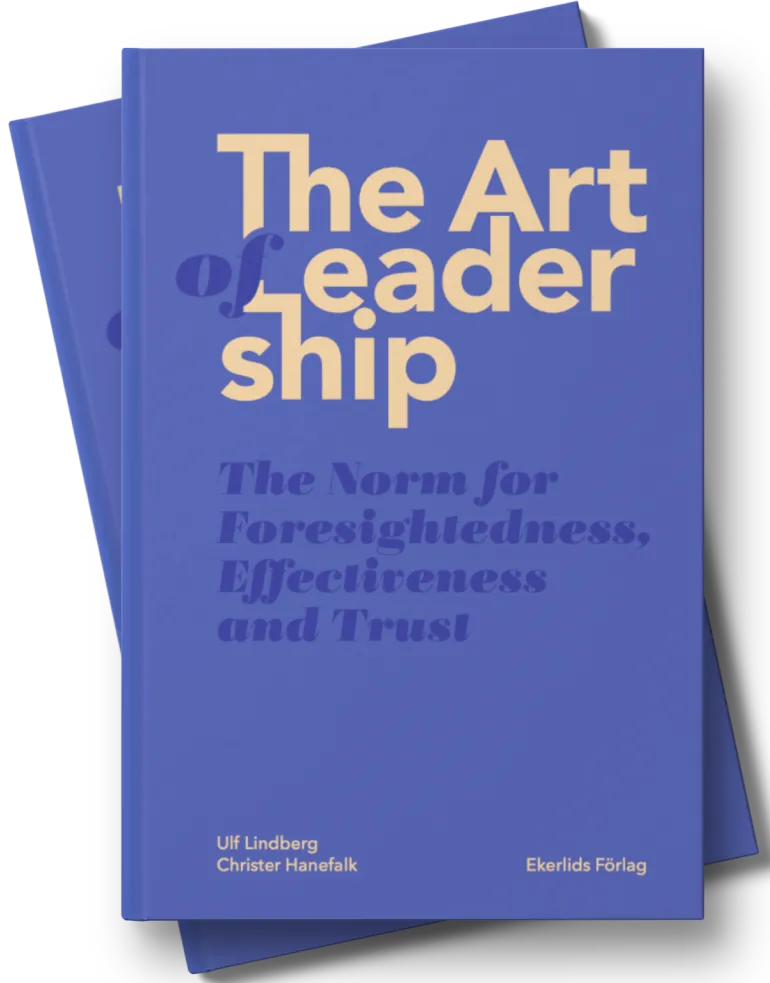Introduction to
The Art of Leadership
The Art of Leadership is a comprehensive and solid guide to effective leadership. The book offers insights and methods to optimize organizational performance based on a review of historical as well as more recent gurus writings and front-line teachings.
Top management in many organizations work with well-proven methods for strategic development, project management, and optimization of horizontal delivery processes. Few leaders however are aware and understand the significance of the discoveries that make it possible to measure and optimize the vertical transformation process, from the highest executive to the management team, and further throughout the organization.
The book is presenting the discovery of the existence of natural, required and measurable levels of roles and individuals in organizations. These findings have made it possible to create transparency in how effective organizations are managed and transformed and disclose what improvements in effectiveness are possible and most important. This opportunity to understand and capture the full potential of the human resources derived from these findings has been the Missing link in evaluating and optimizing leadership effectiveness.
The conclusions and recommendations in this book are based on extensive research in the literature and the use of the discovery of the quantitative methods to measure organizational effectiveness. These methods’ have been applied by top management, with the authors as advisers, in over 300 operations covering tens of thousands of roles and individuals. This systematic work has resulted in valuable insights that provide a holistic view of the importance of leadership and how to manage the most critical processes, including the vertical transformation process, to achieve effective leadership of organizations.
The Missing Link: Measuring and optimizing the vertical transformation process for how to best understand lead, organize and manage the human resources.
Questions that can be answered with methods based on the discoveries of the natural and measurable levels of roles and individuals.
1. Is the Heads overall task sufficiently clear and long term?
2. Are managers most longterm tasks clear and aligned with the Heads task throughout the organization?
3. Do we have redundant or missing reporting levels?
4. Are tasks led, coordinated and performed on the right level to access information, influence decisions and get the needed mandate?
5. Do managers, specialists and other employees match the level of their tasks?
6. How well do we follow up what need to get done and how well are our KPIs aligned with the tasks?
7. Are management principles in line with the overall task?
8. How well is the organization directed, led and structured relative other organizations, anonymized averages?
Reviews
Hear from great leaders that have read the book The Art of Leadership
Olli-Pekka Kallasvuo
”This is the most insightful – and perhaps even more importantly – the most useful leadership book I’ve read. I would certainly have gained tremendously from it, had it been available when I was running Nokia.”
Leif Östling
”This book provides a very good description of – and clarifying examples of – what it takes to get both the horizontal and vertical leadership processes in order. A task which took 15 years to accomplish at Scania.”
Maria Englund
”This is a leadership book that dares to challenge traditional models for how to lead companies and public organizations. It is inspiring, gives new perspectives and knowledge that all readers will benefit greatly from – taking leadership to a totally new level.”
Björn Sällström
"It has been a privilege to follow the extensive work creating the book and the understanding you get from reading it. Most organizations will benefit substantially by embracing the science described in this excellent book. For me, this is what Strategic HR is all about – in reality."
Ragnar ter Vehn
”With a combination of experience and expertise, the authors have succeeded in creating a compilation of leadership through the ages where modern leadership techniques are given a historical perspective with lots of practical examples. This book should be included in all University and other leadership programmes.”

A strong and clear leader, admired by many, questioned by some.
Evaluating past and predicting future performance
Principals and leaders, within both the private and public sector, usually have the ambition to run their business in the best possible way. Most organizations, therefore, have access to transparent financial management systems to be able to optimize the use of the financial resources and financial performance.
Combined with norms what is considered economically achievable, in terms of growth, profitability, returns and financial strength, executives are provided with the possibility to better analyze the past and predict the future.
Many organizations also create transparency in a variety of other success parameters, by conducting their own, or studying general branch indexes such as customer/user satisfaction, productivity, quality as well as indexes to appraise attitudes of employees and other stakeholders. However most organizations lack transparency in how effectively they manage their human resources in the vertical leadership process.
This lack of transparency is clearly a challenge since it doesn’t make it possible to reliably determine the potential for improvements in leadership and organizational effectiveness. Past performance is no guarantee for future performance and maybe there are substantial potential for improvements also among those that are considered to perform the best.
The world is facing enormous challenges on a macro level and maybe one of our most important challenges is to choose the right leaders and create the right leadership systems to manage these challenges. On an organizational level choosing the right leaders and developing the required organizational conditions for foresighted, effective and trust inducing leadership is fundamental for capturing the full potential of any organization.
Exploring Leadership methods and approaches through the Ages
The book is also a solid exposé of leadership through the Ages that provides a holistic view of the importance of leadership, as well as knowledge of the most important processes to achieve effective leadership of organizations.
From the construction of the Great Pyramid 4,600 years ago, to Sun Tzu’s famous writings from the 6th century BC, then through the Roman Empire to the Industrial Revolution with Smith, Taylor, and Ford and further to Lean SixSigma, through prominent project management methods, digitalization and Agile methods; as well as more recent gurus and front-lin teachings and illustrations of the need for leadership in very different businesses.

Media
Videos in English
12 Myths published By: IVA, The Royal Swedish Institute of Engineering Sciences.
Defining these myths was part of one of IVAs major project with the purpose of assisting the Swedish Government in the development of Sweden’s innovation policy.

Myth 1: Hierarchy is old-fashioned and unnecessary
Published By: IVA, The Royal Swedish Institute of Engineering Sciences

Myth 2: There is no point in applying a long-term strategic thinking in a fast changing world
Published By: IVA, The Royal Swedish Institute of Engineering Sciences

Myth 3: The best way to develop a company's culture is to compile and communicate its desired values
Published By: IVA, The Royal Swedish Institute of Engineering Sciences

Myth 4: When hiring externally, hire the individuals with highest capability possible
Published By: IVA, The Royal Swedish Institute of Engineering Sciences

Myth 5: The subordinate, and not the manager, is responsible for his own financial results
Published By: IVA, The Royal Swedish Institute of Engineering Sciences

Myth 6: You can effectively manage companies with financial objectives and values alone
Published By: IVA, The Royal Swedish Institute of Engineering Sciences

Myth 7: The best way to avoid corruptive behavior is to declare and follow up policies
Published By: IVA, The Royal Swedish Institute of Engineering Sciences

Myth 8: The board's most important tasks are corporate governance and to hire and fire the CEO
Published By: IVA, The Royal Swedish Institute of Engineering Sciences

Myth 9: A management team should be small, with a maximum of 7 members
Published By: IVA, The Royal Swedish Institute of Engineering Sciences

Myth 10: The CEO should work with the existing management team and try to lift them to the next level
Published By: IVA, The Royal Swedish Institute of Engineering Sciences

Myth 11: The most important characteristic of a successful CEO is to be charismatic and acion-oriented
Published By: IVA, The Royal Swedish Institute of Engineering Sciences

Myth 12: Financial results are measurable and the only suitable basis for performance evaluation
Published By: IVA, The Royal Swedish Institute of Engineering Sciences
Videos in Swedish

Framsynt och effektivt ledarskap 2.0 - På vetenskaplig grund
Offentliga Affärer

Ledarskap en Svensk framtidsfråga. Ulf Lindberg - Rotary Talks 2019 - Föredrag nr 5:5
RT Seminars

Ledarskap är en konst - vad krävs för att utöva ett effektivt ledarskap?
Hexanova Media Group

Vad händer när chefen blir en app? Intervju med Ulf Lindberg, vd Enhancer
Tankesmedjan Futurion

Framgångsrikt ledarskap - lotteri eller vetenskap?
Offentliga Affärer

Bokrelease: The Art of Leadership The Norm for Foresightedness, Effectiveness and Trust på Kungliga Ingenjörsvetenskapsakademien IVA
Live Streamer IVA

Boktips - The Art of Leadership
KTH Executive School

Skolan och vår kunskapsutveckling – en ödesfråga för Sverige
Almedalen Digital 2021 ApTV Enhancer
Podcasts
Synthesis of the book
The Art of Leadership
The Norm for Foresightedness, Effectiveness and Trust
Executive summery (approx. 10 pages)
“The missing link” in optimizing leadership performance
Our world faces exceptional challenges that impact societies, organizations, as well as each of us individually. Environmental changes and global warming, shortages of energy, food, water and other resources, geopolitical instability, wars and terrorism, pandemics, and other global health concerns, nature catastrophes – the list is much longer.
But, maybe our most important challenges are choosing capable leaders and the required systems to manage these challenges. This executive summary of The Art of Leadership, an in-depth look at leadership theories and models of organizations, reveals how understanding the art of leadership provides the knowledge how to most effectively manage organizations. The summery is related to leadership of organizations such as companies or authorities and other public entities, but the theory and the models presented are also partly applicable and important in governmental leadership of countries.
Throughout history, we have studied the impact of great leaders and leadership systems, as well as those who have failed. The numerous rises and falls of organizations and societies throughout history poses the question: “What can predict future leadership performance?” To what degree do external conditions matter, heritage, or is it just luck? Or – is there a more systematic approach to execute effective leadership that favors future performance?
The Importance of science to manage challenges and create new solutions
New knowledge – based on scientific findings and discoveries of natural phenomena, cause effect relationships, and more accurate ways to analyze or measure the nature of things – has dramatically improved our understanding of both parts of systems and whole systems.
Such discoveries in the natural sciences have not only led to increased knowledge, but they have also resulted in fundamental advancements with new applications and methods. Within the art of engineering and the art of medicine, access to radically improved methods create totally new solutions to handle the causes – and not only the symptoms – of deficiencies and inadequate ways of solving problems. Moving beyond trial-and-error methods, doing what hasn’t been done before, involves taking risks. But new scientific norms provide a better understanding of the nature of things, making it possible to better predict the outcome and to develop new – and sometimes even disruptive – solutions.
Efficiency in leadership of organizational horizontal delivery processes
When practicing the art of leadership in organizations, methods for how to optimize horizontal delivery processes remain critically important. Successful methods originated from the emergence of the industrial era and accelerated during the twentieth century, especially after the conclusion of WW II. In many cases, these methods have led to major improvements in efficiency/productivity and quality.
Such achievements stemmed from the systematic measurement of time, quality, and cost, primarily through the analysis of inter-dependent tasks or work steps as parts of the whole delivery process. A situation which leads to an explosion of opportunities for “doing things right” to optimize efficiency.
The missing link, how to optimize the vertical leadership processes
Vertical leadership processes pose another challenge. Optimizing the vertical process in organizations, – from the Head of the senior management team to the team members and their direct reports and eventually throughout the whole organization – has been largely missing. Obviously financial transparency and systems support such optimization, but how effectively human resources and the organization is managed, demand measurements and transparency beyond financial matters.
- Do we have a foresighted picture of the desired long-term position and external conditions? Is the CEO’s task cascading with clear and aligned tasks to all employees throughout the whole organization?
- Are roles organized on the required level to get the right leadership, coordination, and possibility to perform?
- Does the organization have the right number of levels; not too many and not too few?
- To what degree does the organization have the right person in the right job?
- Are management principles, feedback and reward systems aligned with the head of the organization’s task?
To capture the full potential of the organization, the executives and all other staff, these questions need answers.
Ineffectively managed organizations cause many unhealthy symptoms that don’t reveal the causes
Lack of clarity and foresightedness in strategic thinking, ineffective implementation, inadequate structures and staffing, misaligned leadership principles and poor follow up processes lead to a variety of symptoms.

Treating these symptoms with conventional methods may provide positive temporary effects, but without the possibility to measure and create transparency in the root causes of these symptoms, it remains impossible to make necessary adjustments to achieve sustainable results.
Leaders – in both the private and the public sector – usually hold an ambition to run their organizations in the best possible way. Transparent financial mana- gement systems are normally a must, with measurement based on economically sound norms for growth, profitability, and return on invested capital, as well as financial strength. To improve performance, many organizations also try to create transparency in a variety of other parameters, such as conducting surveys or studying different indexes with customer and user-satisfaction measurement as well as attitudes among employees and other stakeholders.
Yet, most organizations fail to measure organizational effectiveness and therefore lack transparency for how well they manage the vertical process of their human resources.
The possibility to measure organizational effectiveness
A very significant finding in the field of leadership has made it possible to create transparency in organizational effectiveness. A discovery that revealed the possibility to measure the size of roles with a Time-Span, the time it will take to complete the longest-term task in a role.
The importance of Time-span evolved from confusion about roles. Employees in many cases did not perceive the person they reported to as the real boss. Instead, they viewed someone else as the real boss. When the employee needed context and to weigh and foresee consequences of alternative choices, they often consulted with someone other than their manager. This other person, typically sat on a higher reporting level than the manager and was often the managers manager, or a colleague that had a longer-term task and could give the employee better context. This is an example of what today often is called the informal organization. The main revelation distilled to the idea that for a manager to add value to a direct report, that manager needs to have a task on a level with longer Time-Spans than the direct report.
This discovery, and the research that followed into Time-Span measurements across all kinds of organizations in the world revealed that natural levels of roles exist in all organizations and each level of an organization is tasked with very different work. Shifting from one level to the other represent distinct breakpoint, discontinuities, in the type of work that make measurements highly valid.
Once the organization’s most long-term strategic task is defined, the Head of the organization’s task is broken down and clarified with a defined Time-Span. From there, the natural and appropriate organizational structure with the right number of levels can be established.
The relationship between levels and tasks
Understanding an organization’s levels and tasks reveals even more information. Individuals are challenged by, and can manage, the character of work at a specific level, which enables them to capture their full potential on this level. An individual matched to tasks on one level processes information differently from those matched to tasks on another level. These levels can be identified and measured with high validity and exist independently of other factors. The findings reveal that organizations levels are a critical factor when creating the required organizational conditions as they represent a baseline norm for how to structure organizations, define the roles necessary for each level and lay a foundation with the right person in the right job.
Insight about an organization’s levels has implications not only vertically but also horizontally. Roles with longer-term strategic tasks need to be organized, led and coordinated on the same level as other roles that have similar and related long-term tasks. An effective organization ensures everyone has access to the information necessary to influence decisions and receive authority and support to complete their tasks. The same holds true for roles with shorter-term tasks which need to be led and coordinated with other shorter-term tasks on the same level.
The possibility to measure – and understand the importance of levels has led to a knowledge leap – and has given leadership the opportunity to evaluate organizational effectiveness and to optimize the vertical process of leadership – “doing the right things.”
Many executives, however, are unaware of these findings and the importance of establishing a norm for foresightedness, effectiveness and trust derived from these discoveries. The discoveries and the development of Stratified Systems Theory is attributed to the Canadian professor Elliott Jaques (1917–2003). This Theory is the norm for how to best structure and staff organizations to optimize leadership performance. With transparency in levels of roles and individuals, and a clear picture of the organizations desired long-term future position it is possible to design a holistically aligned and effective organizational system. This organizational management system is named Requisite Organization (RO) and can be implemented in 7 steps – RO-Seven. The theory, the norm and the methods derived from this theory, and its applications including RO-Seven, are described in the book The Art of Leadership.
Huge potential to manage the causes of the symptoms
Extensive research shows huge improvement potential when using this norm. The head of the organization’s task, which includes a desired future position, is rarely clearly expressed and is typically too shortsighted. Strategies often proposed or expressed, but without clearly defining where to go, it is obviously difficult to judge whether these are the best strategies for reaching a position that matches the organization’s potential. The desired future position, and what the whole organization needs to accomplish in the long term, along with a Time-Span, needs to be clarified.
Tasks for managers and other employees are also rarely clear, provide enough foresight or properly align with the manager’s task, in addition to missing a Time- Span. The result is a collection of tasks that are not operational enough and hard to follow-up on or measure progress. Time-Span analysis in numerous organizations reveal the following:
- On average, only 60 % of roles are organized on the correct level.
- 70 % of roles have the right person on the right level for the job.
- Only 60 % of direct reports are the right match for the manager’s level.
Many organizations commonly have too many unnecessary and inhibiting layers, while others have too few. When KPIs exist, they are often not aligned with what long-term needs. In many cases the KPIs are too numerous to effectively track, and sometimes they even drive contradictory or counterproductive actions. Time-Span measurements across a variety of operations, including both private and public organizations, reveal that deficits in organizational effectiveness typically stem from dysfunctional leadership and organizational systems, rather than issues related to individual staff members personalities or group dynamics.
Both project and vertical organizational leadership need to emanate from the task
The vertical leadership process shares similarities with project management processes, which start by defining what needs to be done – the overall task – and then moving on to define the time it will take to complete. Effective leadership doesn’t begin with calendar time and what should be done next year, or the year after. It begins with the task – independent of how long-term or short-term the task is. Why is this? Because the longest-term task for the project impacts shorter term tasks for subprojects, which go on to impact even shorter-term tasks. A task repre- sents “what” to do, not a “how” to do things, which means managers and other staff must determine how to do things – at their own discretion – based on their own experience and skills. This creates a space of freedom, where people can use one’s own judgement, which leads to improved motivation, trust, and performance.
Some frequently used methods for organizational structures use a bottom-up method, with the number of direct reports as the parameter determining the next organizational level. In these structures normally 7 roles report to a manager. When there are 7 managers that all have 7 direct reports, the next level is created and so on. Such mechanical methods do not consider the size or complexity of the tasks. In addition, this model leads to many large departments with operational tasks receiving more strategic roles than strategic departments composed of only a few members. Leaders normally aim for effective leadership. However, understanding of the nature of work tasks, levels and how organizations need to be structured and led is not widely known. Some leaders are intuitively talented and effective – those leaders normally gain the most from creating transparency, understanding and applying the norm since they already have their own reference frame that they can relate to.
The missing link in recruitment, lack of ability to measure level of roles and candidates
Recruiting the right person to the right job is a major challenge for any organization. The consequences of making the right or the wrong choice can have monumental consequences. Clear job descriptions and expectations for adequate job experience obviously helps in identifying the right candidate.
What recruitment has missed is the clarity in a role’s tasks. What should the role accomplish, what is the most long-term task and is there a defined measurement of Time-Span, i.e. the level of the role? Organizations rarely determine the size of the role. This lack of measurement of the role’s level reveals a missing reference point against which you can match the candidates.
To compound the matter, frequently used methods such as IQ, cognitive tests and other hiring assessments do not measure a candidates’ level of capability for the expected tasks, yet such measurable methods do exist and are described in The Art of Leadership. Without understanding the organizational levels or access to information about them, it is difficult to match individuals to a role where they can succeed and capture the full potential – for the business as well as for the individual.
When life is at stake – it seems natural – the most effective solutions to take
Deep inside, we have a natural ability to identify tasks and match them to the right level, whether we’re talking about work tasks or other situations. In fact, when life is at stake we normally – to a much higher degree – understand the importance of clear tasks, building and maintaining a required structure, and the intricacies of staffing and organizational effectiveness.
In war and military combat, with police units during special tactical situations (such as terrorist attacks), in hospitals during major emergencies, we naturally organize according to tasks and match them to required levels. The head of the organization’s task is clear. In addition, there is seldom any doubt who should take the lead or step into this role. The management team tasks and roles naturally become clear as well, as each person steps into position, level by level. The tasks are clearly communicated on all levels and the organization’s work becomes much more effective than during ordinary operations.
Because of this natural affinity to step into highly effective organizations during emergencies, some executives might feel that they already optimize their performance, but an informed discussion based on a clearer, more holistic, and relevant view of strategic and organizational conditions, will bring further knowledge about, alignment and commitment in how to proceed to optimize leadership performance.
By introducing an understanding of levels and creating transparency in organizational conditions and effectiveness, and by improving the picture of both internal and external conditions in the present and the future, major insight and results will be accomplished.
Getting a clearer view on the present and future conditions for effectiveness:
Diagnostic 1: Analysis of current organizational conditions and potential for improvement
Time-Span is measured by interviewing the Head of the organization about their expectations on “what” will take the longest time to complete, what future position to reach or what to accomplish, for each direct report. These interviews do not take very long and include an analysis of the roles and levels needed.
Going forward, interview the management team members individually, in the same manner for each of their direct reports. If the management team includes seven roles with 7 direct reports on average, these interviews will cover 49 roles.
During the interviews, the match between the level of the role and the person who holds that role is analyzed. In this way, the Head of the organization gains a clearer insight into what the members of the management team delegate and how effectively the analyzed parts of the organization are structured and staffed. They also gain an understanding of the probable reasons why units and functions perform differently.
Such a process is normally very appreciated by all participants. Clearly identifying what needs to be completed, identifying expectations and establishing the Time-Span is perceived as constructive and useful to everyone.
Analysis of other especially important departments can be completed with this same process to bring further transparency to the improvement potential of organizational effectiveness. So called “Drill-down” analysis of roles on every reporting level can also be made in one or a few departments or units. When the units have similar operations, like retail stores, the ambition is to, in a next step, develop a master for how to manage and organize these units.
This analysis reveals to what degree roles are organized on the required level in relation to their managers role, but also in relation to other roles reporting to other managers. It also shows how well a role incumbent, matches their role and how well they also match their present manager. Benchmarking foresightedness, structure and staffing against other organizations can also be made with anonymized averages from similar organizations. This could include the following: level of CEO task, number of levels in the whole organization, level of specific functions like Finance, HR, IT but also level of programmers, KAMs and other salespeople etc. Changes stemming from the creation of transparency and increased insight is normally well accepted since the causes are easy to perceive and understand, especially when the whole outcome of the analysis is available and discussed.
Diagnostic 2: Clarification of the top executive’s task
At certain times, decision makers in most organizations need to reconcile, improve and calibrate the picture of the external long-term future and their organization’s desired future position. By carrying out a Workshop, the best knowledge, experience, and ideas from those that can contribute the most can be captured.
The focus in these workshops revolves around external parameters that are expected to have an important impact on the organization during the present and in the future. The effectiveness of an exercise like this relies upon eliminating the need to convince one another about their own view or perception. Instead, leader’s use the time to gather everyone’s input related to each parameter covered. As differ- ent people in different roles have varying associations, experience and knowledge, the exercise usually leads to very comprehensive pictures of the areas addressed.
Aggregating the information usually leads to the disappearance of differences in perceptions once the long-term overall picture emerges. It becomes increasingly clear to the participants what is big and what is small, and what is important or less important. The shared view – and the participants’ individual views – becomes not only better and clearer but is also calibrated.
Most participants walk away from the workshop stimulated and energized. The opportunity to contribute and become ‘owners’ of the result gives participants a greater sense of empowerment and motivation. Similar to Diagnostic 1, this type of workshop, along with the synthesis of the outcome, can also be completed during a very short period.
The exercise results in further clarity and insight about the future, especially since focus is on the longer term. It normally achieves a shared aligned view – both for future external conditions and the organizations present conditions. With this background the attendants are well prepared to develop and clarify the organization’s overall task, the Head of the organization’s task, with the desired long-term position – related to customers, users, other stakeholders, employees, and the society at large. Strategies detailing how to get to the desired position, along with KPIs that mark the results, are also clarified.
The clarity in the Head of the organization’s task is particularly important since it represents the foundation for clarifying the tasks for the direct reports to the Head of the organization and throughout the organization – level by level. Obviously, the process of clarifying tasks might lead to changes in the structure and additions or changes in tasks for distinct roles, but such changes will normally be well accepted because they are based on a clearer view of the present and future conditions and transparency in – and the understanding of – the importance of levels.
Diagnostic 3: Digital analysis of indications on causes behind improvement potential in leadership performance
Many organizations conduct various types of Employee Satisfaction analysis to measure how well employees perceive the organization, their management, and their own situation. Such analysis is used to identify areas with high scores that suggests they are well-managed, but also to identify low-scoring areas where improved efforts might be needed. However, the data mainly reveals perceptions and symptoms of what are better or worse. What leadership has lacked is the ability to identify the root causes of these symptoms. Without understanding the reasons why things are perceived as too low or no good, it is hard to find out how to implement constructive use of the analysis.
As an example, assume that in a unit with low scores, the symptoms are that both the manager and the direct reports to this manager lack strategic clarity, motivation and trust and the unit shows insufficient performance. If these symptoms are found in a unit where the manager role is organized on the wrong level, and therefore don’t get access to the needed information and possibility to influence, which means that the manager can’t work effectively – this is most likely the main cause to the symptoms. Similarly, when a manager isn’t matching the role and is perceived more like a colleague by their direct reports, instead of as a real manager, the manager does not add value to the team members, which results in similar symptoms and low scores.
In these cases, and many others, dealing with the symptoms will not solve the issues if the cause of the symptoms remains. Any attempt to improve communications, people or management relationships etc. might help temporary. But what is needed is to handle the causes of the problems if you want to get effective sustainable effects. Interestingly enough, even in organizations that are perceived as top performers, substantial improvement potential usually exists and can be revealed.
To be able to get indications of how effectively different parts of an organization are managed and to identify the likely causes behind low performance and other symptoms – a digital screening can be made in different parts or the whole organization. The screening can be made with a digital survey similar to Employee Satisfaction analysis, but that is built on Stratified Systems Theory and The Art of Leadership. It is called RO-Seven Analysis and shows indications of causes rather than symptoms of what is effective or not. Using such a method is a fast, easy, and inexpensive way to identify areas where the most important and large improve- ment areas exist in the organization. In the Identified high potential improvement areas, a quantitative and more precise and specific Time-Span analysis (see Diagnostic 1. above) can be performed. The Time-Span analysis will result in a valid illustration of the present conditions and actionable improvement potential in leadership and organizational effectiveness. The potential in analyzed areas can be captured with very high precision and normally with substantial and often with almost instant results.

Buy the book
The Art of Leadership

The comprehensive guide to effective leadership written by renowned executive adviser Ulf Lindberg and co-author Christer Hanefalk. The book offers insights, methods and the norm to accomplish leadership that is foresighted, effective, and trust-inducing.
$29.00 USD
$39.00 USD
Contact us
We value your opinions and appreciate your interest in The Art of Leadership. If you have any questions, feedback, or comments, please reach out to us using the form below.






